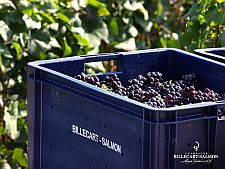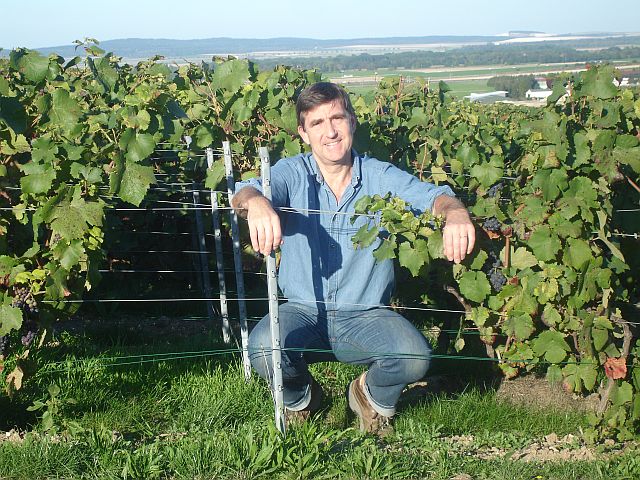 Recently I asked the subscribers to my web site, what type of information they would most like to receive and it was clear that many people really want to delve into the intricacies of champagne and want as much detailed information as they can get.
Recently I asked the subscribers to my web site, what type of information they would most like to receive and it was clear that many people really want to delve into the intricacies of champagne and want as much detailed information as they can get.
So with that in mind here’s a two-part look at a somewhat obscure subject, but one which will give you an insight into the often complex workings of the champagne business: the rules and regulations surrounding the size of the harvest.
In part I we’ll take a look at the decisions that have already been taken about this year’s harvest and what that says about the market as a whole and in part II you’ll get an understanding of how the small grower-champagne makers can play the market to their advantage against the larger houses.
In this level of detail isn’t for you, don’t worry, there will be plenty more articles and videos coming on the web site soon for you to enjoy.
----
With about one month still to go until grape picking starts in Champagne you may be surprised to know that the size of the harvest has already been decided.
In fact it was decided as long ago as July 22nd when the Comité Interprofessionnel du Vin de Champagne (CIVC) announced that they had “ agreed today in Epernay on an available yield of 10,500 kg/ha of which 500 kg/ha will be taken out of the reserve. Moreover, up to 3,100 kg/ha can be picked to be put in the reserve (if the reserve does not exceed 10,000 kg/ha).”
If all this seems rather odd and not a little obscure then perhaps a few words of explanation may help you understand what’s going on.
 The CIVC is the governing body in Champagne. Representatives from all interested parties sit on the board: large houses whose powerful marketing and distribution operations account for the lion’s share of the sales of champagne, but who have to buy most of the grapes they need; small grape growers who either sell their grapes, or keep them to make their own champagne and last, but not least, the cooperatives.
The CIVC is the governing body in Champagne. Representatives from all interested parties sit on the board: large houses whose powerful marketing and distribution operations account for the lion’s share of the sales of champagne, but who have to buy most of the grapes they need; small grape growers who either sell their grapes, or keep them to make their own champagne and last, but not least, the cooperatives.
The short-term interests of these various players don’t always coincide. For example the grape growers want a high price for the grapes they have to sell, whereas the large houses want to buy at the lowest possible price. By the same token the growers prefer a large harvest because more grapes mean more income for them. However, if the big houses are finding that sales are slow and their stocks are already building up too much, the last thing they need is a bumper harvest and even more grapes on their hands.
One of the main purposes of the CIVC therefore, is to facilitate an agreement on the size of the harvest so that, in the mid- to long-term, the supply of grapes – and therefore of champagne – is kept in balance with worldwide demand. That should ensure that the image of champagne as a prestige product is maintained and provide stability across the industry. (I’ll get my knuckles rapped for that. The champenois prefer not to use the word ‘industry’ – it’s doesn’t quite convey the right tone of elegance and luxury, but it’s not easy to find a good alternative in English)
It used to be the case also that the CIVC determined the price of grapes per kilo, but that’s no longer true and prices are determined by the market. We can come back to that topic in another post sometime, but for now let’s get back to the size of the harvest and what the CIVC had to say about it.
The average annual yield from a hectare of vineyard in Champagne can be anything from about 10,000 to 14,000 kilos and of course there are years when it can be much less, or even more, depending on the weather and a host of other factors.
It’s because of this unpredictability that the champenois came up, many years ago, with the system of reserves which entails taking part of each harvest, pressing the grapes, making the juice into still wine and storing that until it is needed in subsequent years. There are different ways of storing the reserve to obtain different results, but again, that’s topic for another time.
The reserve wines serve two main purposes: first they act as a cushion against poor harvests in the future and so they provide a guarantee that there will always be a reasonable volume of champagne each year. Second, because they are left to age a few years, reserve wines add depth and complexity when blended with wine from the most recent harvest. 
So getting back to the announcement by the CIVC, they have said that 10,500 kilograms of grapes per hectare can be used this year to make into champagne, but they also said that 500 kilograms worth has to be taken from existing reserves so that means that only 10,000 kg of grapes per hectare may be harvested this year
So using some rough calculations we can see approximately how many bottles of champagne are going to be made from the 2013 harvest
|
10,000
|
Kilos picked per hectare
|
|
6,375
|
= Litres of juice from 10K kilograms
|
|
8,500
|
=> 75cl bottles of champagne
|
|
34,000
|
Hectares under cultivation
|
|
289,000,000
|
=> Total production potential in bottles
|
If we now add back in the 500 kg that may be taken from the existing reserves, and use the same method of calculation, that translates into
|
500
|
Kilos that may be taken from the reserve
|
|
319
|
= Litres of juice from 500 kilograms
|
|
425
|
=> 75cl bottles of champagne
|
|
34,000
|
Hectares under cultivation
|
|
14,450,000
|
=> Total production potential in bottles
|
So that gives us a likely total of about 303 million bottles that will be produced this year for sale in about 2 to 3 years’ time.
To put that into context, the maximum production capacity of the Champagne region is approximately 320-330 million bottles.
 The record for sales was in 2007 when slightly less than 339 million bottles were shipped, but that level wasn’t sustained or sustainable. Shipments dipped back under 300 million in 2009 and although demand has firmed up a bit since, last year’s shipments were still only 309 million bottles.
The record for sales was in 2007 when slightly less than 339 million bottles were shipped, but that level wasn’t sustained or sustainable. Shipments dipped back under 300 million in 2009 and although demand has firmed up a bit since, last year’s shipments were still only 309 million bottles.
So it looks as if the CIVC is still pretty cautious about the market in the immediate future and they certainly aren’t looking to increase stocks in anticipation of a champagne boom any time soon.
History suggests that they know what they are doing, mind you. I can’t think of any other product that has maintained such an exclusive image in good times and bad over a history as long as that of champagne.
In part II we’ll look into some of the other things that the smaller producers can do to maintain the balance between them and the giant brands and in the meantime, if you have any comments or questions about this article, please drop me a line at
This email address is being protected from spambots. You need JavaScript enabled to view it.
Meanwhile...Stay Bubbly,
Jiles
 In part I of this article on Grower Champagnes we discovered that the difference between the large champagne brands (NM) and the grower champagnes (RM) is that RM don't have the right to buy in more than 5% of the grapes they need – 95% or more must come from their own vineyards.
In part I of this article on Grower Champagnes we discovered that the difference between the large champagne brands (NM) and the grower champagnes (RM) is that RM don't have the right to buy in more than 5% of the grapes they need – 95% or more must come from their own vineyards.

 Recently I asked the subscribers to my web site, what type of information they would most like to receive and it was clear that many people really want to delve into the intricacies of champagne and want as much detailed information as they can get.
Recently I asked the subscribers to my web site, what type of information they would most like to receive and it was clear that many people really want to delve into the intricacies of champagne and want as much detailed information as they can get. The CIVC is the governing body in Champagne. Representatives from all interested parties sit on the board: large houses whose powerful marketing and distribution operations account for the lion’s share of the sales of champagne, but who have to buy most of the grapes they need; small grape growers who either sell their grapes, or keep them to make their own champagne and last, but not least, the cooperatives.
The CIVC is the governing body in Champagne. Representatives from all interested parties sit on the board: large houses whose powerful marketing and distribution operations account for the lion’s share of the sales of champagne, but who have to buy most of the grapes they need; small grape growers who either sell their grapes, or keep them to make their own champagne and last, but not least, the cooperatives.
 The record for sales was in 2007 when slightly less than 339 million bottles were shipped, but that level wasn’t sustained or sustainable. Shipments dipped back under 300 million in 2009 and although demand has firmed up a bit since, last year’s shipments were still only 309 million bottles.
The record for sales was in 2007 when slightly less than 339 million bottles were shipped, but that level wasn’t sustained or sustainable. Shipments dipped back under 300 million in 2009 and although demand has firmed up a bit since, last year’s shipments were still only 309 million bottles. 
 In the past couple of weeks we've had really hot weather in Champagne and this has inevitably lead to some spectacular thunderstorms and, unfortunately, to hail too.
In the past couple of weeks we've had really hot weather in Champagne and this has inevitably lead to some spectacular thunderstorms and, unfortunately, to hail too. article. You'll see that the paddles have been removed. Is this because of the store or just for routine maintenance?
article. You'll see that the paddles have been removed. Is this because of the store or just for routine maintenance?  A friend of mine recently posted a comment on Facebook about my web site. He said that anyone interested in champagne, particularly grower champagnes, could find just about anything they wanted on my site, except tasting notes.
A friend of mine recently posted a comment on Facebook about my web site. He said that anyone interested in champagne, particularly grower champagnes, could find just about anything they wanted on my site, except tasting notes.